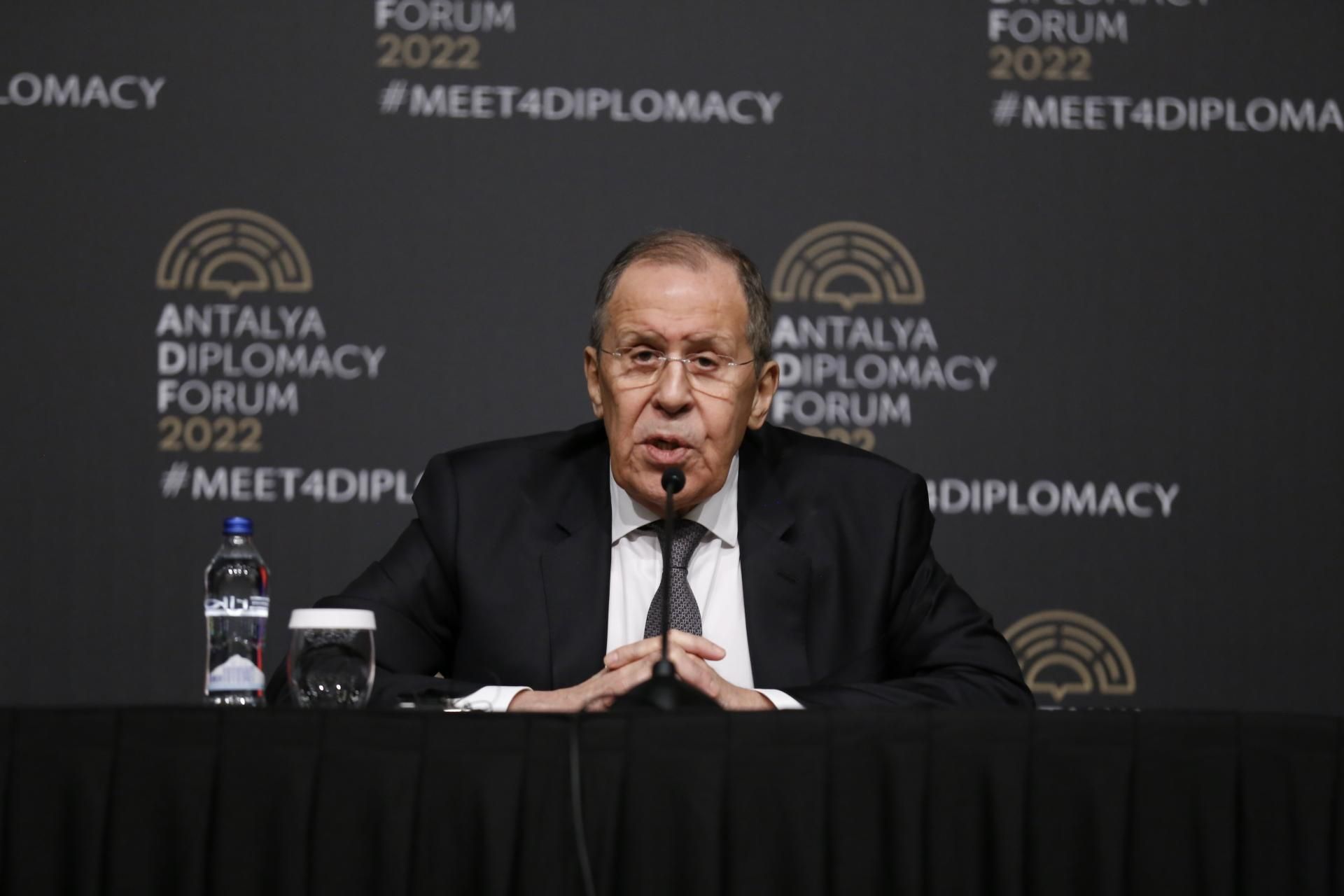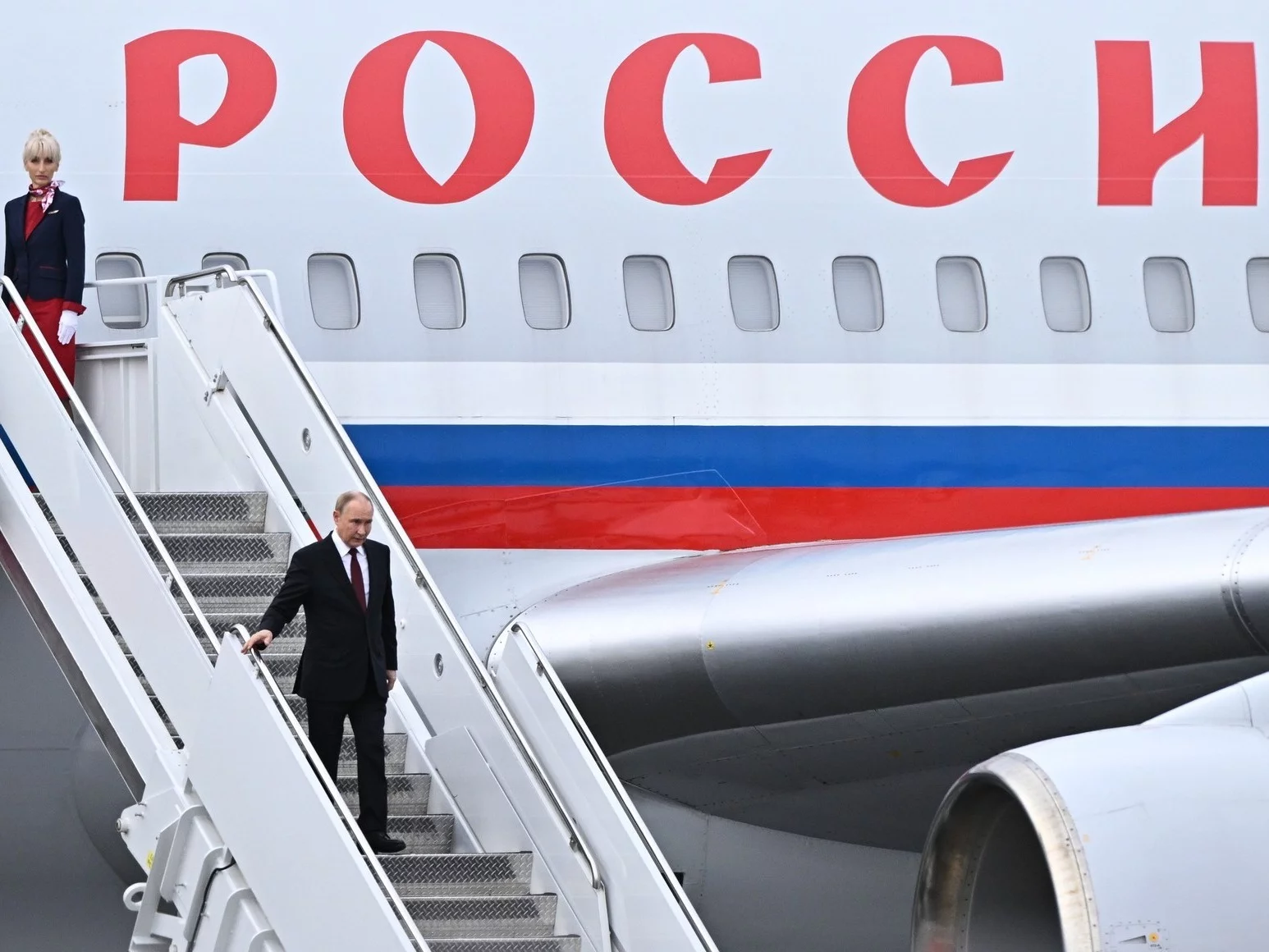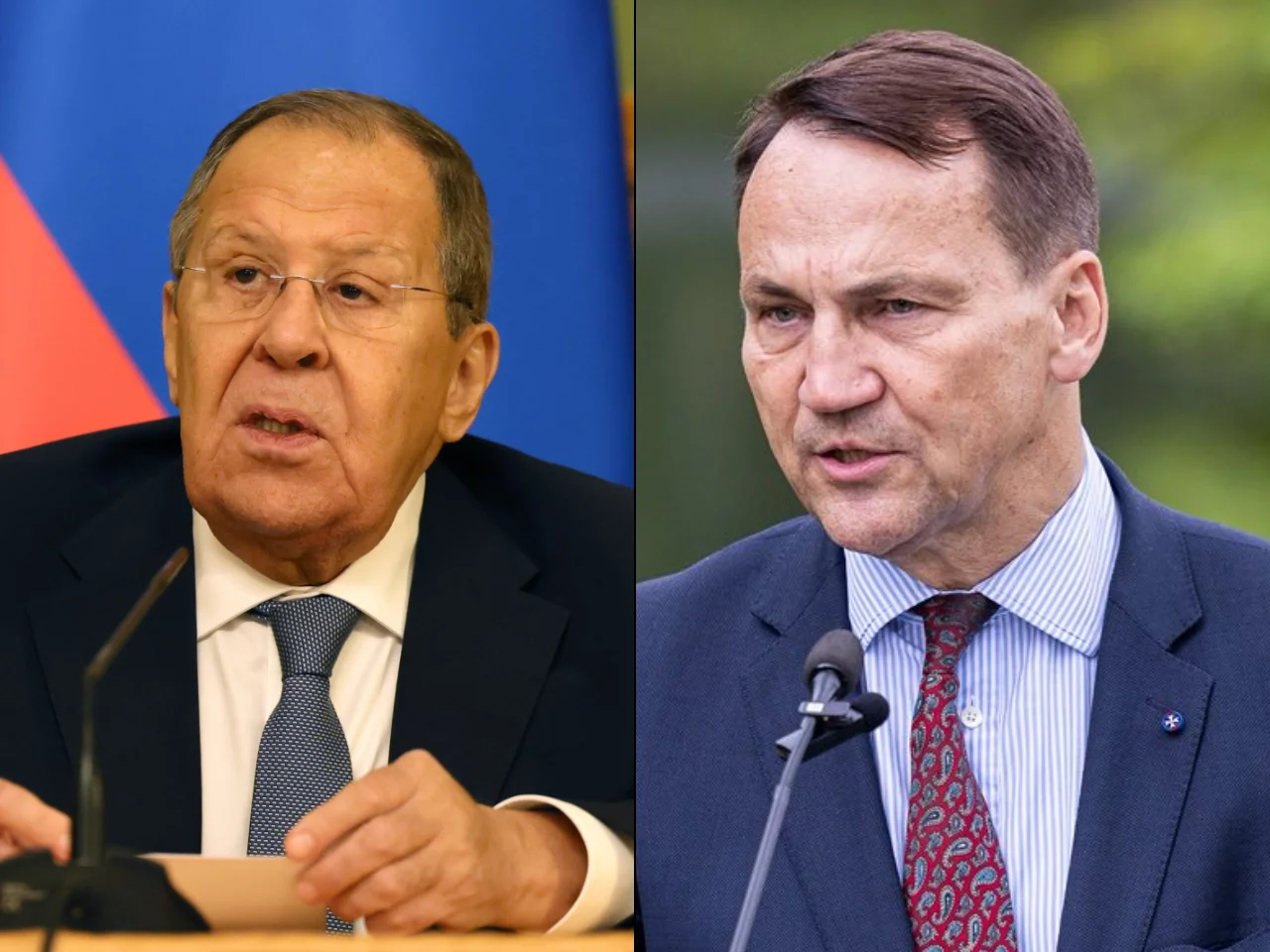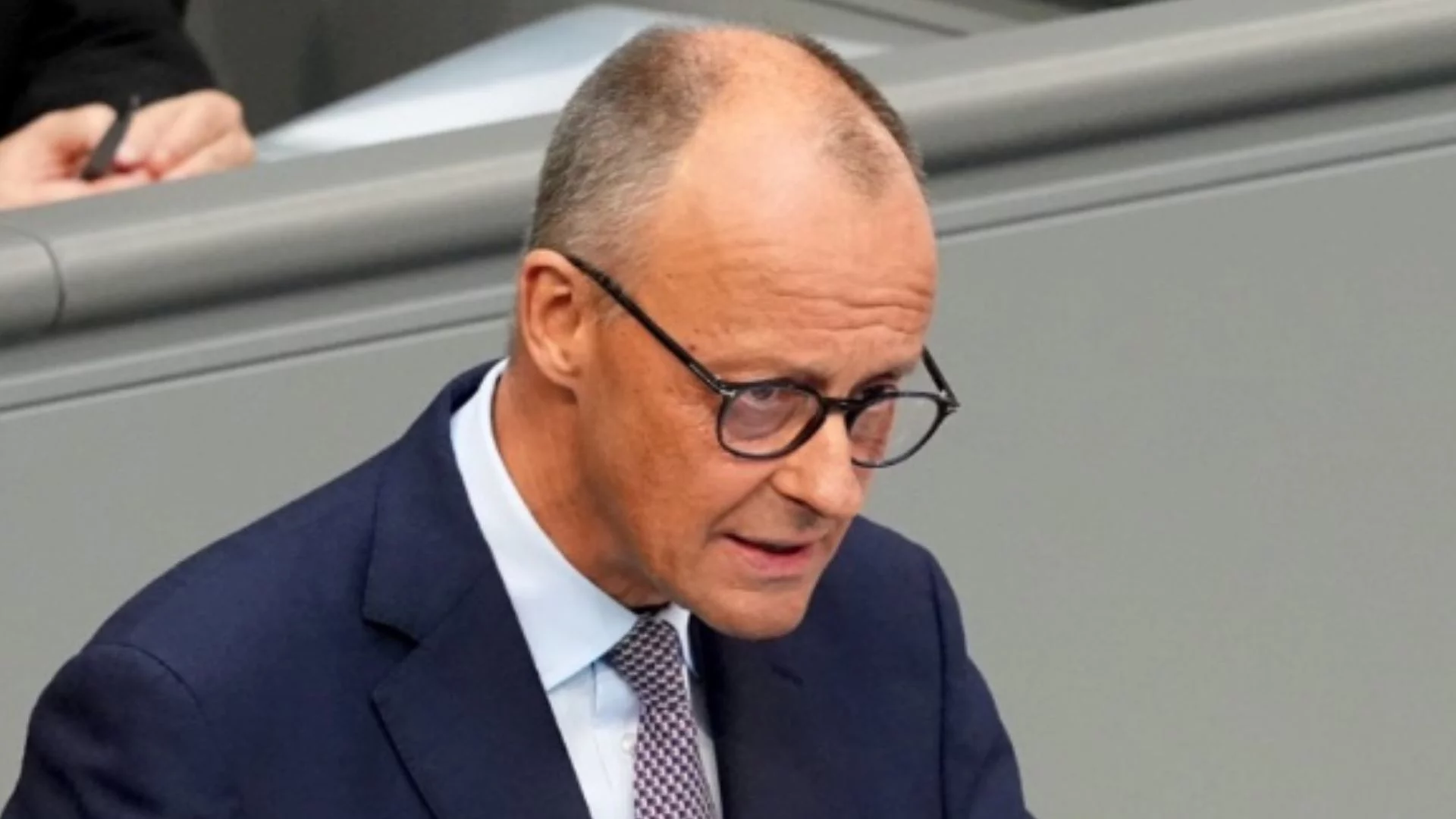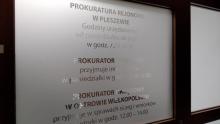The peace deal initiated in Washington DC speaks of a “Trump Route” that would go through Syunik province, bringing prosperity. But on the ground, the people who would be most affected are full of trepidation and desperately distrustful of Azerbaijan. If the Americans land with massive infrastructural projects, they may not find it so easy to win over hearts and minds.
One of them is 47-year-old Father Avetiq Mardirosian. In the garden of his monastery, he indicates a low wall with engravings in the grey stone. Among the Armenian crosses, there is carved a word to honour the past and forewarn the future of Syunik.
“We lost Nagorno-Karabakh due to the fact that we did not love it, and God gave it to our enemy so that we would endure on our skin. Now look here, it is written “remember”,” Father Avetiq says. “You must love and preserve. If you don’t love, God will take it from you,” he warns.
Father Avetiq serves as spiritual leader of the Vahanavank Monastery, a place where his communicative and Syunik’s come together. Born in Kirkuk, Northern Iraq, a city that hosts about 30 Armenian families and is home to Kurds, Iraqi Turkmens and Arabs, Father Avetiq’s eyes have met those of the same populations that dominated Syunik over a 1000 years.
A region contended for centuries
When in the 12th century Armenia was a fragmented set of kingdoms, Syunik was 1 of the last to fall under the force of the Turkish assaults. erstwhile a stronghold of learning, the Vahanavank Monastery began its gradual decline. It fell into ruins after the 14th century, erstwhile attacks by Mongols and Turkmens brought the region to its knees and strangled Armenians with dense taxation.
However, as Syunik had been swept by waves of abroad domination for the next centuries, Armenian monks followed the precept nowadays engraved in Vahanavank Monastery. They preserved cultural heritage and faith, like Avetiq did under Saddam Hussein’s radicalizing Iraq. Although he had to abrogate Christianity while in the army — “I was forced to say the Shahada, the muslim declaration of faith; it was forbidden to disobey; it was the regulation of Saddam,” he says — Avetiq later took his vows for the Armenian Apostolic Church in Kirkuk.

During the mediate Ages Tatev Monastery hosted 1 of the most crucial Universities of Armenia, which remarkably contributed to the preservation of its culture. Today, the monastery is considered 1 of the 2 most crucial monasteries in Armenia, along with Noravank Monastery. Photo: Michele Crestani
History intertwined Avetiq and Vahanavank Monastery in 1978, erstwhile the Soviets began restoration and he was born. “Iraq was my birthplace. I loved it, I grew up and graduated. But Armenia is my homeland,” he says.
Yet Father Avetiq is worried about the present tensions between Armenia and Azerbaijan. Since Vahanavank Monastery definitively regained life in 2016, he took over its leadership and witnessed the fresh Nagorno-Karabakh conflicts, both won by Azerbaijan — the 44-Day War in 2020 and the cleansing of cultural Armenians 3 years later. “I have anxiety that past repeats itself. If we don’t love our motherland, God will give it to the enemy,” he warns.
Present-day controversies
These fresh conflicts led to the agreement on a peace treaty between Armenia and Azerbaijan in March 2025. However, it was very much up in the air until August 8th 2025, erstwhile president Trump held a summit with Prime Minister of Armenia Nikol Pashinyan and president of Azerbaijan Ilham Aliyev, in Washington DC. The trilateral signature of a foundational framework formalized Armenia and Azerbaijan’s commitment to peace. In Washington’s agenda, this memorable first step should normalize the relation between the 2 countries over the next 3 years. The peace treaty is inactive unsigned.
Given that Azerbaijan took full control of Nagorno-Karabakh — known in Armenia as Artsakh — in September 2023, 1 of the key issues remains the indirect references to Nagorno-Karabakh in the Armenian constitution, according to Baku. This historical event put a full halt to 35 years of wars in the region and forced the displacement of about 120,000 Armenians towards their motherland.
Sixty-year-old Ruzanna Tsatryan has been part of the exodus: “Until the last second I didn’t believe we were leaving,” she says. After fitting 11 people in an eight-seater car, Ruzanna left everything behind — documents, 2 houses, and hectares of orchards. On a rainy day, she embarked on a one-way journey towards mainland Armenia that lasted 2 days.

Ruzanna holds her telephone to show a reel, edited with The Gladiator subject song, which commemorates Armen Meliki Tsatryan, her brother. “The most painful minute was leaving cemeteries, due to the fact that you don’t know what they will do to those graves in the future,” she says. Ruzanna’s husband and brother, who both died during the first Nagorno-Karabakh war, are buried there. Photo: Michele Crestani
Normally, it took 1 hr to traverse the Lachin Corridor, a six-kilometre lifeline that utilized to link Nagorno-Karabakh to Syunik between 2020 and 2023. For Ruzanna, leaving Nagorno-Karabakh has meant losing home. For Syunik, it has meant losing a buffer region against Azerbaijani pressure. Now, Syunik is simply a 40 kilometre-wide strip of land uncomfortably wedged between Azerbaijan and Nakhchivan, Azerbaijan’s exclave, touching Iran in the utmost south.
Ruzanna lives in Agarak, a settlement of 5,000 that hosts the sole land checkpoint between Armenia and Iran. As Syunik’s green mountains, fertile land and geographical proximity to Nagorno-Karabakh remind Ruzanna of her homeland, the present-day tension around the Trump way for global Peace and Prosperity (TRIPP), another cornerstone of the Washington Summit, evokes the old anxieties of Nagorno-Karabakh. Projected to become a crucial trade artery, TRIPP would straight link Azerbaijan and Nakhchivan, immediately flanking the border with Iran and passing through Agarak.
Ruzanna powerfully opposes the newly-designed trade route, formerly known as the “Zangezur Corridor” — a word politicized by Baku to place Syunik under force after 2020. “Under the mask of trade, they could bring military forces inside Armenia and then start something from the inside. That’s how it began in Artsakh: during the russian times we could see that they were bringing in Azerbaijanis into Armenian territory. They wanted to do it undercover, but the Artsakhtsi understood it and fought back,” she says.
A geopolitical prize and a local nightmare
TRIPP is the main reason why Syunik is now in the global spotlight. The way should operate under a joint Armenia–US venture and fall under Yerevan’s jurisdiction, ensuring Armenia’s sovereignty and territorial integrity with the complete absence of any abroad military. While Azerbaijan pushed for the uninspected passage of goods as a prize for its triumph in 2023, only commercial access should be permitted and subjected to inspection under the work of highly qualified companies hired by the US and Armenia. Non-commercial and military products would be banned.
This initiative might unlock trade values worth 50 to 100 billion US dollars by 2027, reduce Europe-Asia transit times by 2 weeks, and diversify European access to energy. As discussions to reopen the Armenia-Turkey border will likely be on the table during the coming years, TRIPP could further enhance access to Caspian energy reserves and establish a direct link between Turkey and the wider community of Turkic states. With Russia and Iran’s attention diverted towards the wars in Ukraine and mediate East, the American exploitation of this exceptional power vacuum in the South Caucasus could further weaken their position. Russia might lose relevance in its historical area of influence, while Iran could in global trade routes.
Truck fleets regularly travel the main road traversing Syunik. According to Mehdi Sobhani, erstwhile Iranian ambassador in Yerevan, about 400 trucks cross the Iran-Armenia border daily. But TRIPP could cut the number of transits into Iran by 20 to 30 per cent.
Tehran remains cautious but accepts the route. The trade volume between Armenia and Iran is approaching 1 billion US dollars, most of which is happening with trucks — 76 per cent of freight transport in Armenia is moved via road. Specifically, in 2024, bilateral trades reached 737.4 million US dollars, a 6.5 per cent increase compared to 2023.
Furthermore, TRIPP could sideline the North-South corridor road, the Armenian backbone for truckage that will connect the Iranian border to Georgia and up to Black Sea ports, bypassing the current slow, mountainous road. Financed by the European Bank for Reconstruction and improvement and the Eurasian improvement Bank, the construction of the southern segment cutting through Syunik began in 2024. The task should be completed not earlier than 2031.

Construction sites for the Armenian North-South corridor road between Meghri and Kadjaran. Photo: Michele Crestani
The local dimension
When driving alongside the border with Azerbaijan, it is easy to see fortifications under construction. These defensive positions respond to the ongoing skirmishes in villages next to the frontier, which have kept fears of a fresh conflict alive.
Many fortifications are visible while approaching Nerkin Hand, a distant village at the end of a valley that overlooks Nagorno-Karabakh. Embraced by green mountains illegitimately occupied by the Azerbaijanis, their forces control all strategical positions in Nerkin Hand, including the village church, cemetery, and water sources.
From her backyard, 72-year-old Laura Khalapyan sees the Azerbaijani outposts close to the mountain summit. Her house, like many others, constitutes an easy target.
“Even early in the morning, there were shootings. It is very average in the bordering villages. Sometimes they shoot just in the air for intellectual pressure. Sometimes they can mark the houses. Sometimes they may play the Adhan song [the muslim call to prayer] to intimidate us,” Laura says.
The population in Nerkin Hand is aging and declining. It counts less than 100 souls, who find expanding challenges in getting food from orchards or cattle. The Azerbaijanis occupy the available space. Residents gotta trust on Kapan, the nearest city, even for dairy products. So, the only village hub remains the school, where Laura teaches technological subjects.
The school expects to have just 3 students for next year and may face closure. Parents are weighing up whether to send their kids to school in the neighbouring village, or even in the city. This would not only slash at the last semblance of community life, but besides the fewer available jobs. According to Laura, the school employs about 15 workers.
Prospects for distant villages specified as Nerkin Hand are dim. “It’s a chain of problems,” Laura explains. “If the parents know that the kids will go to school [in the city or a neighbouring village], they’re losing their jobs. They cannot get a occupation at the another school. You cannot have cattle here. You cannot do farming here. What’s the meaning of staying in a village? In wintertime — we can have severe winters here — you cannot look for wood for the heating strategy due to the fact that now the forest is under the control of the Azerbaijanis. And let’s say you decision to the city — erstwhile it’s spring or summertime you get back to the home to take care of it. But in that case, this cannot be a village. It would be empty. So 1 problem will origin another problem. It’s not just taking the kid and putting them in another school,” Laura says.
Laura wants to stay in Nerkin Hand to keep the village alive, although a relocation to Kapan would easy improve her standards. Counting circa 33,000 inhabitants, Kapan is the capital of Syunik state and cradles Father Avetiq’s Vahanavank Monastery on a close mountainside. In Kapan, Laura could teach at TUMO, an after‑school creative‑tech academy, free from tuition and entrance exams, which empowers teens across Armenia with 21st‑century skills.

Anush teaching in a TUMO box. Photo: Michele Crestani
50-year-old Anush Mezhlumyan is the manager of the Kapan hub. In 2024, TUMO gave fresh life to the old train station, which fell into disuse after the russian times — Kapan was connected via train to Azerbaijan and railways ran where TRIPP should be built.
According to Anush, TUMO has 911 active students. any of them come from neighbouring villages and the city of Goris. “I see myself great. I’m learning pedagogy, how to connect with teenagers and their language,” Anush says. But Kapan is 1 kilometre distant from the Azerbaijani border. So, Anush has to adapt: “This is my homeland. Fear is not about us. All the kids are aware of the unstable situation; they remember the last Karabakh war.”
TUMO is diametrically other to the declining school in Nerkin Hand. It is simply a flourishing educational programme blending self-paced learning, hands-on workshops, and task labs in 14 fields like coding, music, robotics, writing and more. For example, 13-year-old Angelina studies filmmaking. While completing a screenplay writing exercise that references Harry Potter and The Lord of the Rings, her tri-lingual TUMO profile (Armenian, English and Russian) keeps track of her progress.
After beginning its main building in Yerevan in 2011, TUMO now has branches in 10 countries, educating over 20,000 teenagers. By 2026 it aims to deploy 16 regional hubs and 110 mobile “TUMO Boxes” throughout Armenia, partially filling the educational gap in agrarian communities specified as Nerkin Hand. “TUMO Boxes” are shipping containers converted into classrooms equipped with computers and the internet. In a TUMO box, 39-year-old Armen Gevorgyan, an automation engineer, teaches about 20 students Java, HTML and web development.
The way forward
At present, after 34 years of independence, Armenia is delicately nestled in the South Caucasus. The Washington Summit on August 8th was likely the first gambit to find peace in the region. However, the success of this first proposal hinges on a shifting geopolitical order, which the historical actors in the region — Russia and Iran — might be reluctant to accept.

Mount Khustup, 1 of the symbols of Syunik. Photo: Michele Crestani
In the normalization framework brokered by the US, the withdrawal of the unlawful Azerbaijani positions from Armenian territories seems implicit, like in Nerkin Hand. This and another concrete steps towards the signature of a peace deal — specified as the fulfilment of Azerbaijani claims regarding the Armenian constitution — stay unclear.
Centring the deal on the TRIPP transit way in Syunik should deter future Azerbaijani aggressions. That is why, just as Syunik has been the last bastion many times in Armenian history, this so-far neglected region might be the pivot of a future stableness felt throughout the global stage.
Michele Crestani is simply a freelance writer and photojournalist from Milan reporting on discipline and education, geopolitics, and underground culture. He studied journalism at the London School of Journalism and has been training in photoreportage under the mentorship of Valerio Bispuri. His different background in bioengineering blends technological literacy with communicative and visual storytelling, frequently centering on underrepresented communities and overlooked forms of resistance, with the aim to translate complexity into human meaning. Michele started out in journalism working in Yerevan, Armenia with EVN study and The Armenia Project. He now collaborates with various global outlets and is besides developing longform photoreportage projects. You can follow his work here.
New east Europe is simply a reader supported publication. delight support us and aid us scope our goal of $10,000! We are nearly there. Donate by clicking on the button below.


